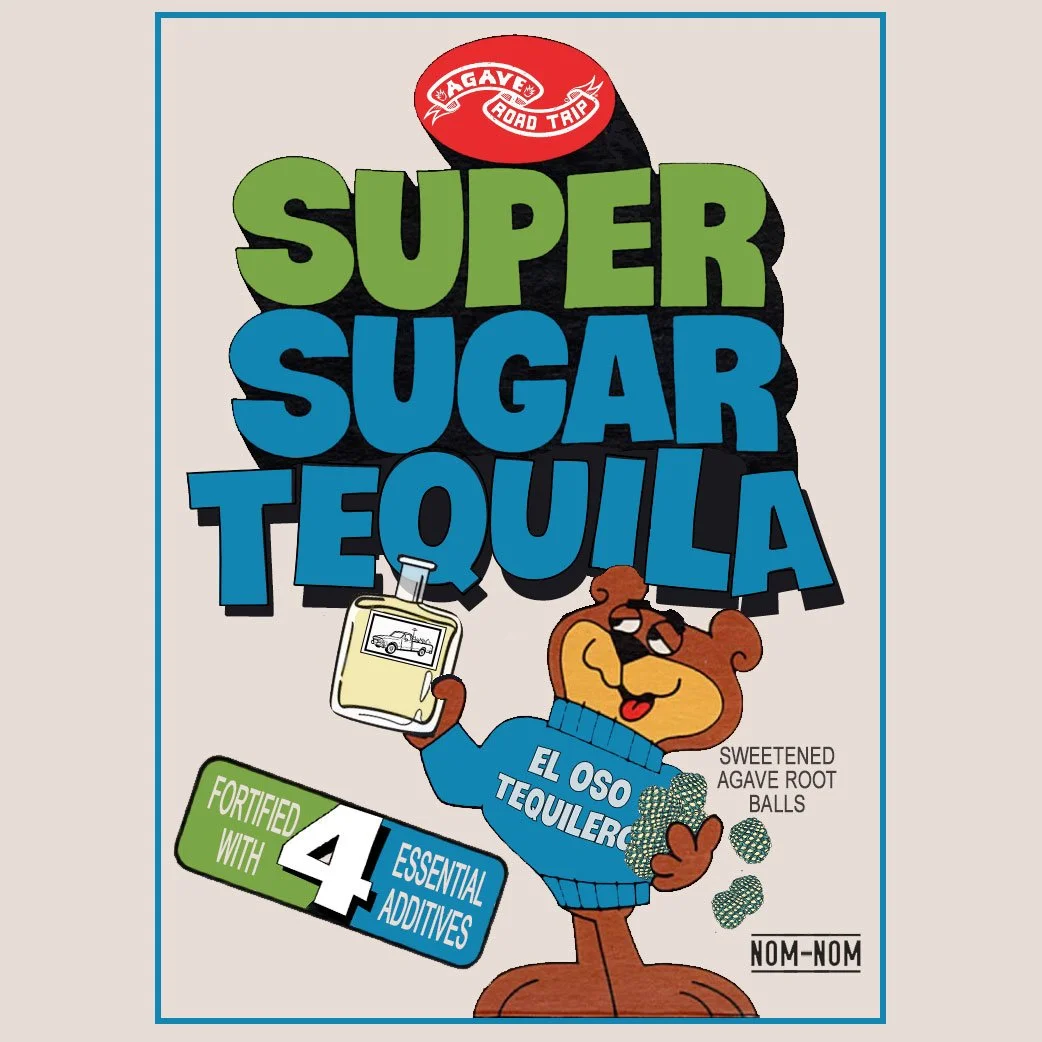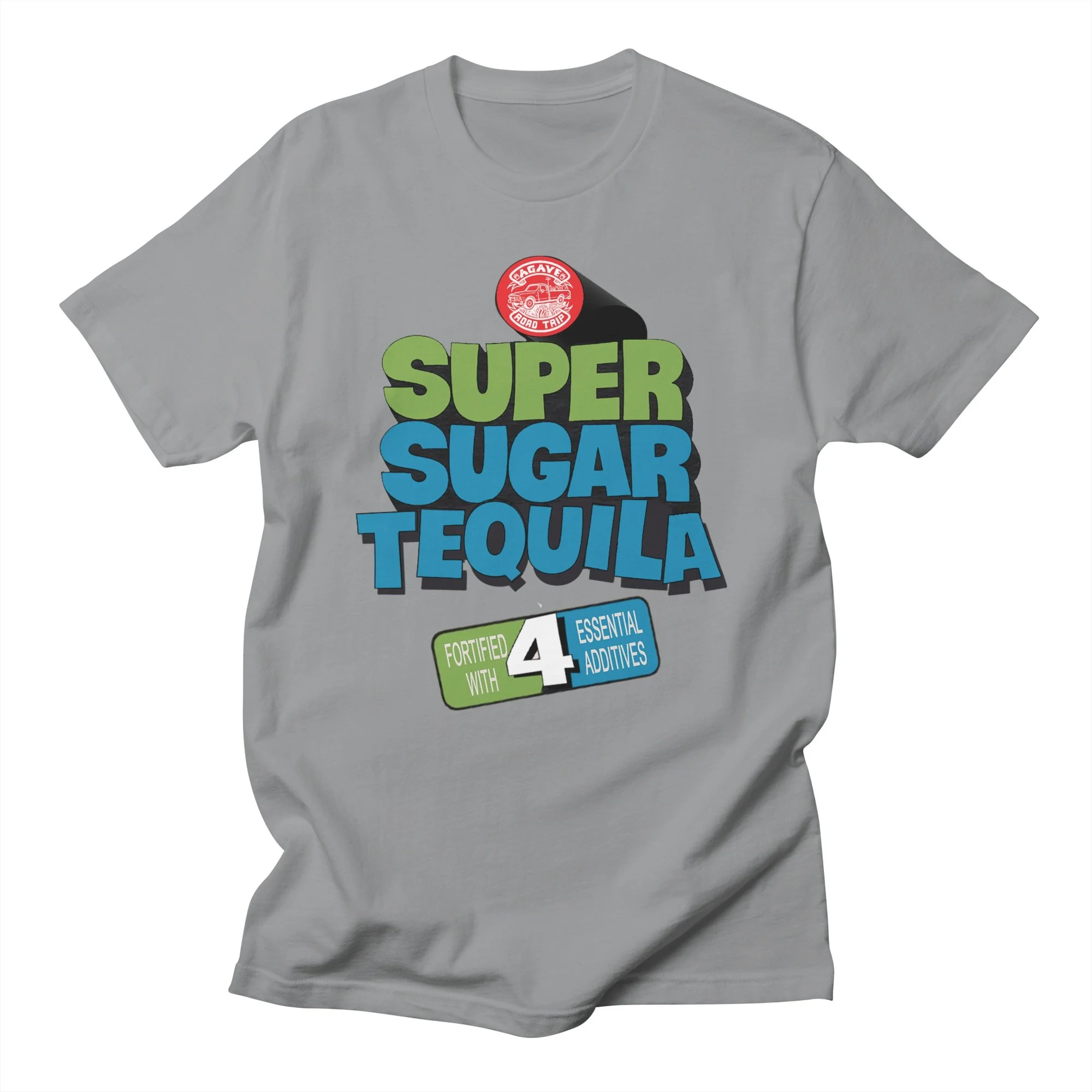Super Sugar Tequila: Fortified with Four Essential Additives
How sweet it is! Mexican regulations allow up to 1% of your tequila to be additives, the four most common being sugar-based syrup, glycerin, oak extract, and caramel coloring. Purists get outraged by this — it’s cheating! But we’re far more interested in what this means from a health standpoint. So we called in Agave Road Trip medical correspondent Dr. Ryan Aycock. Cocktail MD gives us the lowdown on tequila additives in this episode of Agave Road Trip!
Zapotitlán de Vadillo is a community of some 6,000 people in south central Jalisco. There’s a long history of traditional agriculture in this community — what’s now being called regenerative farming. But that history is at risk of disappearing. SACRED is supporting the build of a 4,000-square-foot public library in the community. The focus of the library will be regenerative farming, with a large portion of the collection being selected by local vinateros. SACRED is humbled and proud to be able to help support the future of regenerative agriculture in Zapotitlán de Vadillo. And it’s all made possible by a grant from 818 Tequila. To learn more about this library, and the other projects 818 Tequila is funding, please visit us at sacred.mx. The earth is home to all of us, and we’re honored to have been selected by 818 Tequila as their partner in making it a more welcoming home.
Agave Road Trip is an award-winning podcast that helps gringx bartenders better understand agave, agave spirits, and rural Mexico. It’s hosted by Lou Bank and Chava Periban.
Can’t get enough of Super Sugar Tequila?
For a limited time, get your Super Sugar Tequila T-shirt!
Notes
Check out Tequila Matchmaker, a great resource that will tell you how and where your tequila was made. It’s also the service that is certifying some tequilas as additive-free.
Doc spent so much time doing research for this episode, I’d feel badly not sharing the links. So here you go!
Sugar-based syrups:
Syrup, or “jarabe”, is a mixture of different ingredients, primarily for the purposes of creating a sweeter product. Agave nectar, corn syrup, cane sugar, aspartame, sucralose (Splenda), and stevia could all be used as a sweetening agent for tequila. The jarabe can also contain natural fruits and herbs to add aromas and flavors, too.
"Effects of non-nutritive (artificial vs natural) sweeteners on 24-h glucose profiles" - Ten healthy males took part in this randomized, crossover study with the following four treatments: aspartame-, monk fruit-, stevia-, and sucrose- (65 g) sweetened beverages… Twenty-four-hour glucose profiles did not differ between beverages.
"Administration of aspartame in non-insulin-dependent diabetics" - No effect on glycemic control in non-diabetics.
"Aspartame use by persons with diabetes" - No effect on glycemic control in diabetics, either.
"Short-term impact of sucralose consumption on the metabolic response and gut microbiome of healthy adults" - Thirty-four subjects divided into two groups, one that was administered sucralose capsules (780 mg/d for 7 d; n 17) and a control group receiving placebo (n 17)… consumption of high doses of sucralose for 7 d does not alter glycemic control, insulin resistance, or gut microbiome in healthy individuals.
"Chronic sucralose consumption induces elevation of serum insulin in young healthy adults" - Participants consumed either sucralose or placebo daily for 10 weeks. The sucralose group showed greater insulin and serum glucose levels during an oral glucose challenge.
Glycerin:
Glycerin is a natural byproduct of fermentation and distillation. Additional glycerin can be added in order to create a more rounded mouth feel. It is one of the most common additives used in tequila. It makes a tequila that is “thin” or watery feel fuller and thicker in your mouth. It is often found in toothpaste as it does not feed bacteria; in cake icing to serve as a food thickener; and in Elasto-Gel for wound care. It’s been used as an out-of-date glaucoma treatment, a treatment for hypoglycemia, and as laxative. As a sugar substitute, it has approximately 27 kilocalories per teaspoon (sugar has 20) and is 60% as sweet as sucrose.
Oak Extract:
This adds to the finished spirit both aromas and flavors that are found in oak barrels. When using oak extracts, it’s possible to make a tequila smell or taste as though it were aged longer than it actually was. Oak extract is also known as Robuvit. Robuvit has been credited as aiding in liver recovery following an alcohol-related injury; combatting chronic fatigue; mitigating leg swelling from lymphedema; and aiding in recovery following hysterectomy.
Caramel Coloring:
Used primarily for the purposes of adding color to the finished product. Caramel coloring has a mildly bitter taste and is used for aesthetic purposes. There are four classes of caramel coloring. The United States does not make a distinction between these classes, but the European Union sure does.
"Caramel color safety - An update"
They are known to facilitate flavor retention and the dispersion of water-insoluble material like essential flavor oils. Caramel color is also known to retard flavor changes that occur in some beverages as a result of sunlight.
1. Made with 4-methylimidazole — causes seizures at high doses (100 mg/kg). Clear evidence of carcinogenic activity in mice based on increased incidence of alveolar/bronchiolar neoplasms. California's Proposition 65 listed it among known carcinogens. PepsiCo was forced to reformulate its product so that it could sell in California.
2. 2-acetyl-4(5)-tetrahydroxybutylimidazole — immunotoxic against T-cells
"Caramel Color in Soft Drinks and Exposure to 4-Methylimidazole: A Quantitative Risk Assessment"
Using ultrahigh-performance liquid chromatography-tandem mass spectrometry, the study assessed 4-MEI concentrations in 12 beverages purchased in California. Goya Malta was the worst offender. The lowest concentration was in Coca-Cola.


